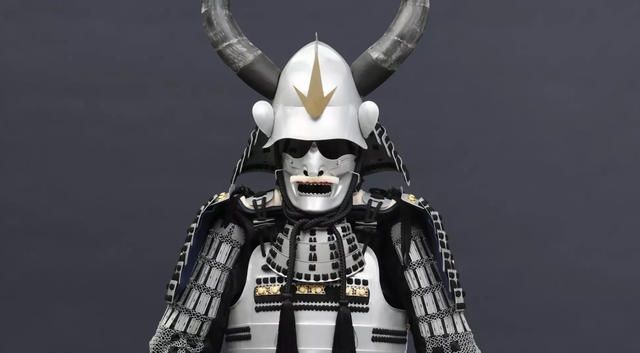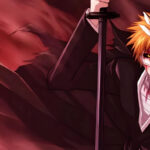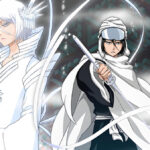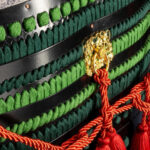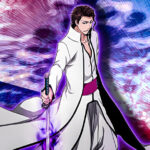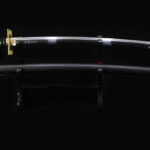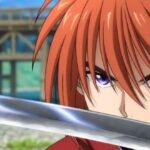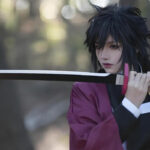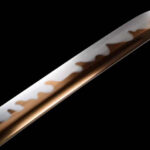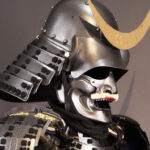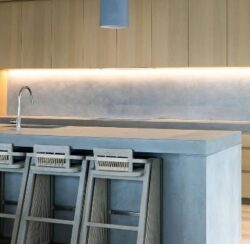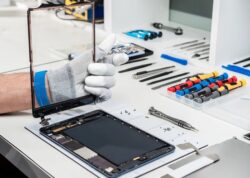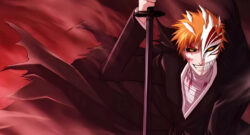Why Handmade Full-Size Silver Japanese Samurai Armor Is a True Masterpiece
What Makes a Handmade Full-Size Silver Japanese Samurai Armor a True Collectible Masterpiece?
For history enthusiasts and samurai culture collectors, a hand-forged full-size Japanese samurai armor is not just a stunning work of art—it is a vessel of history and spirit. This hand-crafted full-size silver Japanese samurai armor set with helmet faithfully recreates the honor and soul of the ancient warrior through exquisite craftsmanship, authentic design, and meticulous historical restoration. This article explores its historical background, artisan craftsmanship, cultural symbolism, and collectible investment value from multiple dimensions.
What Is Samurai Armor Called?
Samurai armor, known in Japanese as “Yoroi” (鎧), originated during the Heian period (794-1185) and reached its peak during the Kamakura and Sengoku eras. Early armor was made from leather, iron plates, and silk cords, primarily designed for mounted archers. As warfare intensified and techniques advanced, the armor evolved—enhancing both protection and flexibility while becoming a symbol of status, loyalty, and honor among the samurai class.
Over time, the shift to plate construction and laced assemblies marked the evolution from leather to iron laminate.
Armor Styles in the Sengoku Period
During the Sengoku period (1467–1603), Japan was engulfed in civil wars, prompting major samurai clans to develop lighter, more agile armor such as Dō-maru and Ō-yoroi. The Dō-maru was a more flexible chest armor suited for foot soldiers.
Compared to earlier heavy designs, these new models emphasized mobility without compromising defense. Silver armor was often reserved for ceremonial occasions or high-ranking generals, symbolizing nobility, power, and prestige.
Bushido: The Soul of the Samurai
Samurai armor was far more than battlefield protection—it embodied the Bushido spirit (武士道)—the code of the warrior emphasizing loyalty, courage, honor, and discipline. Loyalty, courage, honor, and discipline were reflected in every detail—from the armor’s structure and engravings to its colors and family crests (Mon). A warrior clad in armor not only commanded respect on the battlefield but also represented the moral and spiritual strength of his clan.
Ceremonial and Cultural Significance
Spiritual preparation: Before donning armor, samurai performed meditation or prayer to calm their minds and focus their spirit. The act of wearing armor was a ritual that balanced strength and serenity—a reminder to face death with discipline and resolve.
Family honour and identity: Family crests and distinctive colors on armor represented lineage and duty. For example, certain samurai clans favored silver and red to symbolize courage and nobility, while others favored sober designs reflecting authority and stability.
Symbol of discipline and unity: Whether on the battlefield or during formal ceremonies, samurai armor served both functional and ceremonial roles—protecting the warrior while displaying composure, order, and the moral principles of Bushido.
For modern collectors, this handmade silver samurai armor with helmet is not merely a decorative display—it is a spiritual artifact that captures the essence of Japan’s warrior ethos.
Artisan Craftsmanship: Hand-Forged Full-Size Armor
In addition, this armor highlights the pinnacle of Japanese traditional workmanship. Each suit is hand-forged, polished, riveted, and lacquered using time-honoured techniques, combining functionality with beauty. Whether used for interior display, historical reenactment, or cultural collection, it stands as a magnificent representation of Japan’s samurai heritage.
Legendary Samurai Armor and Clan Heritage
The Sengoku era (1467–1603) was a turbulent age of warfare and shifting alliances. Samurai families not only fought for survival and power but also for legacy and honour. Their armour became a tangible expression of identity, hierarchy, and martial excellence.
Oda Nobunaga and the Legend of the Silver Armor: Oda Nobunaga, one of Japan’s “Three Great Unifiers,” was known for his innovative warfare and his army’s silver-lacquered armors. The dazzling reflection of silver on the battlefield was said to intimidate enemies while showcasing Nobunaga’s dominance and prestige.
Tokugawa Ieyasu’s Authority and Discipline: The Tokugawa family favoured simplicity, balance, and practicality in armor design. The shogunate founder used armor not only for protection but as a statement of moral authority. Family crests (Mon) on his armor signified lineage, responsibility, and the sacred duty to protect peace and order across the land.
Armor as Family Heritage: In many samurai families, armor was passed down through generations as a treasured heirloom. Each battle-scar, restoration, and ceremony added layers of meaning, turning armor into a living record of a family’s history and values.
These stories give each piece emotional and historical depth, making modern collectors feel connected to Japan’s feudal heroes.
Modern Collecting and Cultural Significance
The handcrafted silver Japanese samurai armor stands today as a bridge between ancient warfare and modern cultural preservation. It combines artistry, history, and philosophy, allowing collectors to experience the “Soul of the Samurai.”
Historical immersion and ceremony: Viewing or wearing this armor evokes the atmosphere of feudal Japan. The silver finish, gleaming softly under light, brings to life the dignity and courage of the ancient samurai.
Cultural legacy and symbolism: Every Yoroi suit pays tribute to Bushido—embodying loyalty, integrity, compassion, and respect. Through preservation and study, modern collectors continue to pass on the timeless values of the warrior’s code.
Artistic and educational value: Perfect for display in museums, martial-arts dojos, or private collections, the armor serves as both an art piece and an educational tool for understanding Japan’s feudal structure, craftsmanship, and aesthetics.
Investment and rarity: Full-size handmade samurai armor is rare and highly valuable. Each set is crafted by skilled artisans using traditional forging and lacquering techniques. With the growing global admiration for Japanese culture, such pieces are gaining appreciation both artistically and economically.
Through this convergence of history, art, and spirituality, the handmade silver Japanese samurai armor (with helmet) transcends its function as a relic of war—it becomes a timeless cultural masterpiece. In owning it, collectors not only preserve a work of craftsmanship but also inherit the enduring honour, courage, and discipline of Japan’s legendary warriors.
Cultural Symbolism and Decorative Value
The silver samurai armor holds a special place in Japanese traditional culture — it represents not only power and honour, but also a deeper sense of aesthetic and spiritual beauty.
Symbol of nobility and purity: In Japanese culture, silver is often regarded as a “sacred colour,” symbolising purity, nobility, and fearlessness. During the Sengoku period, only high-ranking generals or noble samurai could wear silver armour, marking their elite status and indomitable spirit.
Craftsmanship and cultural heritage: Each piece of silver armour embodies the philosophy of Japanese craftsmanship. From the gentle metallic lustre to the harmonious balance of silk colours, every detail reflects the essence of Wabi-Sabi—the beauty of simplicity, restraint, and depth. Every plate, rivet, and pattern is meticulously handcrafted, showcasing both practicality and artistic value.
Decorative and display value: Whether displayed in a traditional Japanese interior or a modern collection room, silver samurai armour becomes the focal point of visual impact. It fuses classical Eastern elegance with contemporary aesthetics, serving as both an artistic centrepiece and a symbol of honour and strength, enriching any space with historical depth and cultural prestige.
Spiritual and symbolic continuity: For many collectors, this armour is not just an artwork but also a spiritual emblem—representing perseverance, honour, and the unwavering courage to face challenges. It embodies the timeless “Soul of the Samurai,” allowing the Bushido spirit to shine even in modern times.
This handcrafted silver Japanese samurai armor with helmet blends history, art, and philosophy. It is not merely a collectible masterpiece, but a cultural treasure that speaks of Japan’s soul. For enthusiasts of samurai culture, historical re-enactment, and fine craftsmanship, it stands as a perfect bridge between past and future.
Types and Design Features of Samurai Armor
Japanese samurai armour (“Yoroi”) evolved across different eras, each type tailored to unique combat and ceremonial purposes:
Ō-yoroi (大鎧) – Great Armour: Primarily used by mounted samurai during the Sengoku period, this heavy armour provided full-body protection through layered metal plates and leather cords.
Dō-maru (胴丸) – Chest Armour: A lighter, more flexible version designed for foot soldiers, balancing mobility and defence.
Haramaki (腹巻) – Belly Wrap Armour: Simple in design and easy to wear, often used by guards or lower-ranking samurai. Despite its lightweight structure, it maintains fine craftsmanship and decorative crests.
Kabuto (兜) – Helmet: The helmet protected the head while showcasing the warrior’s identity. Its crests (maedate), horns, and facial masks (menpō) represented the samurai’s clan and battle prowess.
The silver Kabuto, in particular, symbolised nobility and power—a hallmark of commanding officers.
Understanding these variations helps collectors appreciate the historical and cultural depth of this handcrafted silver Japanese samurai armour.
Here’s a breakdown of top selections and why they matter:
Handmade Life Size Yoroi, Silver Japanese Samurai Armor with Helmet: A flagship full-size silver armour with helmet, especially designed for collectors wanting high-impact display pieces.
Hand‑crafted Full‑Size Silver Japanese Samurai Armor Yoroi: Another premium piece emphasising full-size format, silver finish, and detailed craft.
Hand‑made Masamune Date Japanese Samurai Armor with Silver Crescent Helmet: A themed set referencing the legendary swordsmith and samurai milieu—ideal for fans of samurai legend and display.
Oda Nobunaga Silver Nanban Armor Full Set: A high-end rare piece tied to the historical figure Oda Nobunaga—great for serious investment collectors.
Hand‑made Japanese Samurai Armor for Minamoto‑no‑Yoshitsune Life‑Size Yoroi: A themed historic reference to the famed Minamoto-no-Yoshitsune—adding narrative depth to your collection.
Hand‑made Samurai Armor | Japanese Yoroi Suit (Wearable & Display): A more wearable display suit, offering both functional costume use and collector aesthetic.
Japanese Samurai Armor, Oda Nobunaga Silver Nanban (Rare Premium): A rare premium variant lending serious provenance and rarity for high-end collectors.
Hand‑crafted Samurai Armor Set | Steel Plated Samurai Costume Silver: More accessible price point, still handcrafted with silver plating—ideal for entry-level collectors or those focused on display rather than pure investment.
Ideal for Collectors and Display Enthusiasts
With the growing global fascination for samurai culture, life-size handcrafted samurai armour has become a prized collectible.
Historical re-enactment – Perfect for samurai festivals, historical performances, and cosplay events.
Home décor – Enhances the elegance of living rooms, libraries, or galleries with cultural gravitas.
Investment value – Handcrafted, limited-edition production gives it strong long-term appreciation potential.
Modern Applications and Collectible Value
Today’s collectors acquire life-size samurai armour for both cultural preservation and personal enjoyment:
Historical re-enactments & cosplay – Authentic reproduction enhances immersion in Japanese history and aesthetics.
Film & photography props – The intricate design offers high visual realism for cinematic and artistic productions.
Home or museum display – A striking exhibit that reflects sophistication and historical interest.
Investment potential – With authentic craftsmanship and limited production, it is a valuable cultural asset with growing demand.
Conclusion
This hand-forged, full-size silver Japanese samurai armor with helmet is a tribute to Japan’s legendary warriors and their undying Bushido spirit. Whether for collection, display, or historical re-enactment, it embodies the essence of honour, courage, and craftsmanship.
For historians, collectors, and samurai enthusiasts alike, this armour is an unmissable masterpiece—a living testament to the glory and discipline of Japan’s warrior heritage.
Add it to your collection today, and let the legend of the samurai live on before your eyes.
Handmade Life Size Yoroi,Silver Japanese Samurai Armor with Helmet
